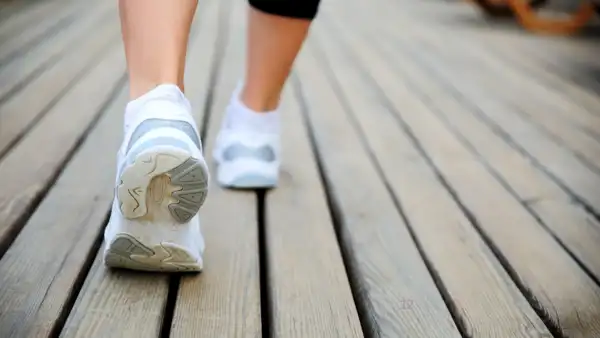5 side effects of walking too much and what to do about it - Times of India

Walking has numerous health advantages and is a low-impact aerobic activity. Simple and no-equipment workout: walking can be one of the best ways to stay in shape. It's a fantastic method to control weight, elevate mood, and strengthen the heart.
However, you can overdo it, just like with other activities. You may be wondering how much walking is too much if you now walk for exercise or intend to start. The response is contingent upon multiple circumstances. The following information will help you determine how much walking is too much for you.
Even while 10,000 steps is an often mentioned goal, your daily step count will vary depending on your age, degree of fitness, and health objectives.
Aiming for 8,000–10,000 steps a day is generally a decent baseline, although even fewer steps can have positive health effects. Long-distance walking has advantages that can make the effort worthwhile. Increasing your step count may help you live a longer life in addition to reducing your chances of type 2 diabetes and boosting heart health. Walking more steps per day was linked to a lower risk of death from all causes than walking fewer steps per day, according to a 2020 study of nearly 4,800 American people.
'Too much walking' is a relative concept. Your degree of fitness, experience, and general health all play a role. After a vigorous 30-minute walk, a novice hiker may feel pain, but an experienced hiker may go painlessly for hours. There's no one-size-fits-all solution, but it's important to pay attention to your body.Perhaps you follow the "hot girl walk" fad on TikTok, or perhaps you've embraced the urban hiking movement, which for some people is walking up to 10 to 15 kilometers per day.
Walking, or any exercise for that matter, has no "maximal" limit.

It's common for old ailments, such as a hurting knee, to recur. Increased risk of injury: Overtraining soreness can result in poor walking form and posture, which can raise the risk of injury. Additionally, compared to when they are properly rested, sore or wounded joints are more vulnerable to an unexpected, serious injury.
Calluses and blisters may develop on or around your feet if you’ve been walking a lot lately.
Although they are typical with new shoes, recurrent calluses or blisters may be a sign of poor gait or poorly fitting footwear.
Your capacity to exercise is impacted by overtraining. Overtrainers become tired easily. You might have heavy breathing and find it difficult to talk in complete words, even at a reduced speed. At this point, you ought to pause and consult a medical professional to help direct your recuperation.
Swelling and pain in feet indicate that a recent walk was either too long or too strenuous. You can experience a decline in your performance and heavy, tight muscles if you walk consistently for a longer duration.
While walking may be a mood booster, walking too much may generate anxiety. Psychological symptoms like depression and anger may arise if you keep walking too much or too intensely.
Starting with no more than 15 minutes of walking at a moderate pace is an excellent technique for beginners. You'll know you're at the proper pace when you can talk in complete sentences without breathing significantly. Next, increase the amount of time you spend walking each week by a few minutes until you reach 30 minutes of vigorous walking. You should be breathing through your lips instead of your nose, but you should be able to speak in complete phrases.Try to walk at least three days a week to reap the full benefits of walking. You should exercise in other ways besides walking, such as strength training, flexibility training, and balancing exercises.
With all its benefits, there are some potential disadvantages too












